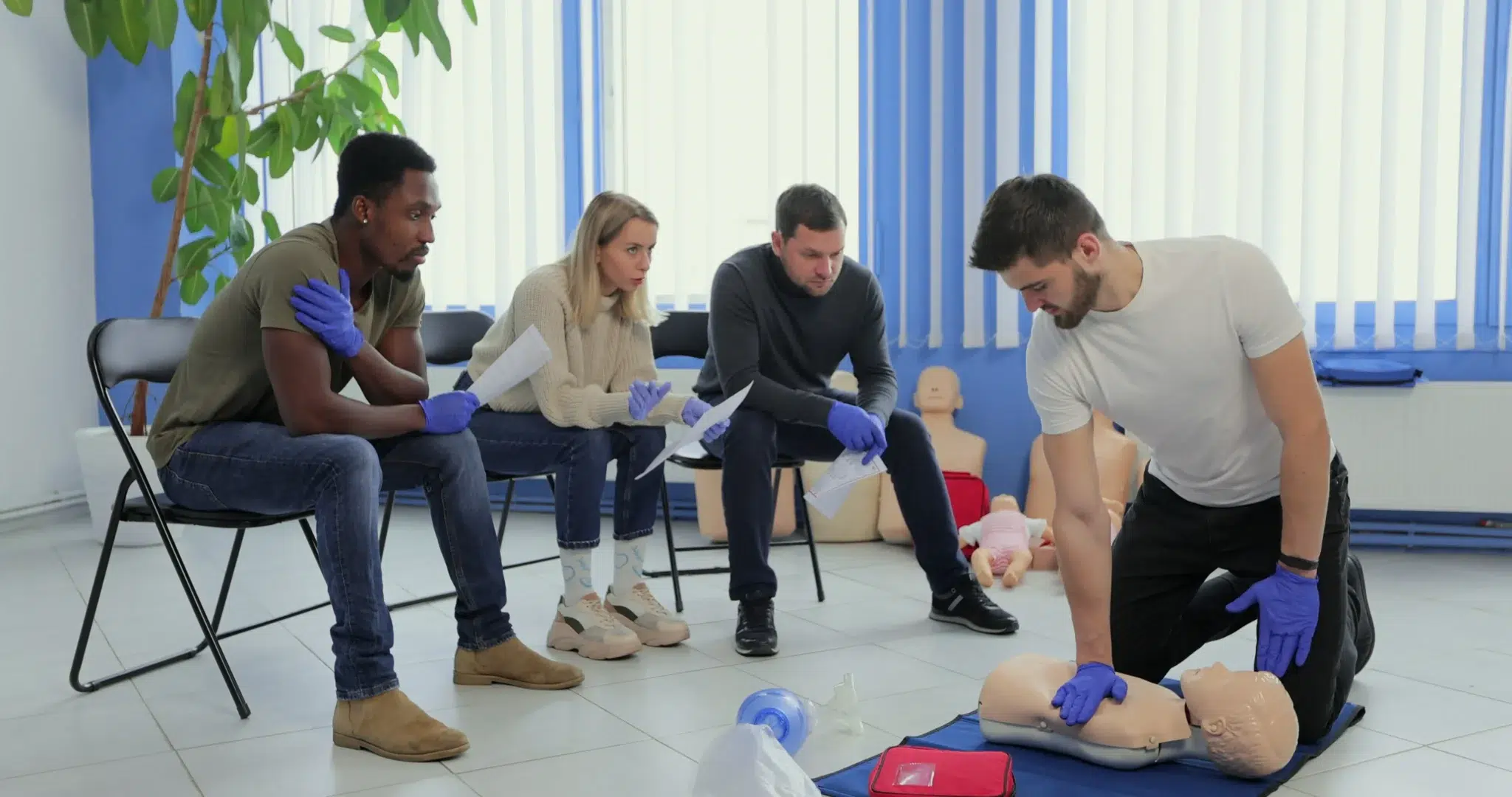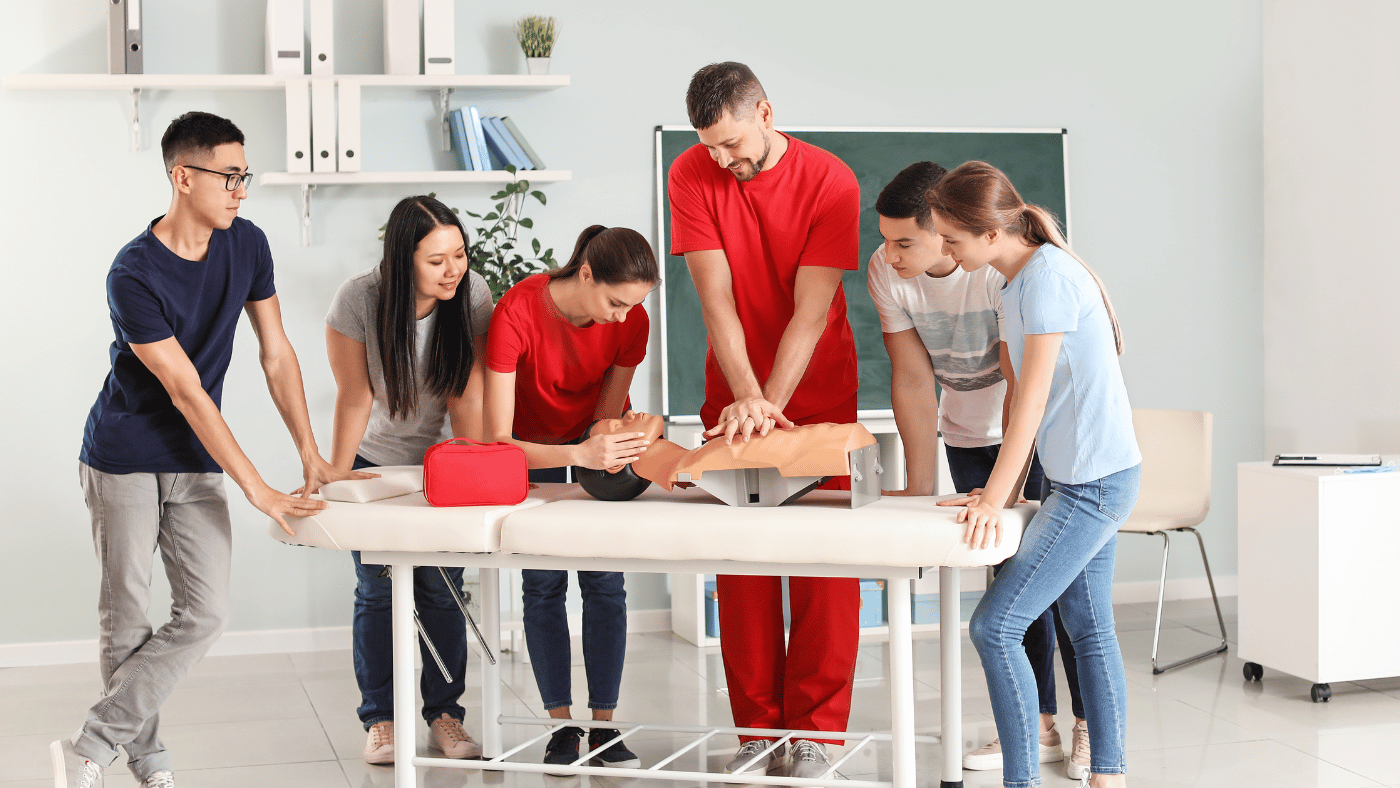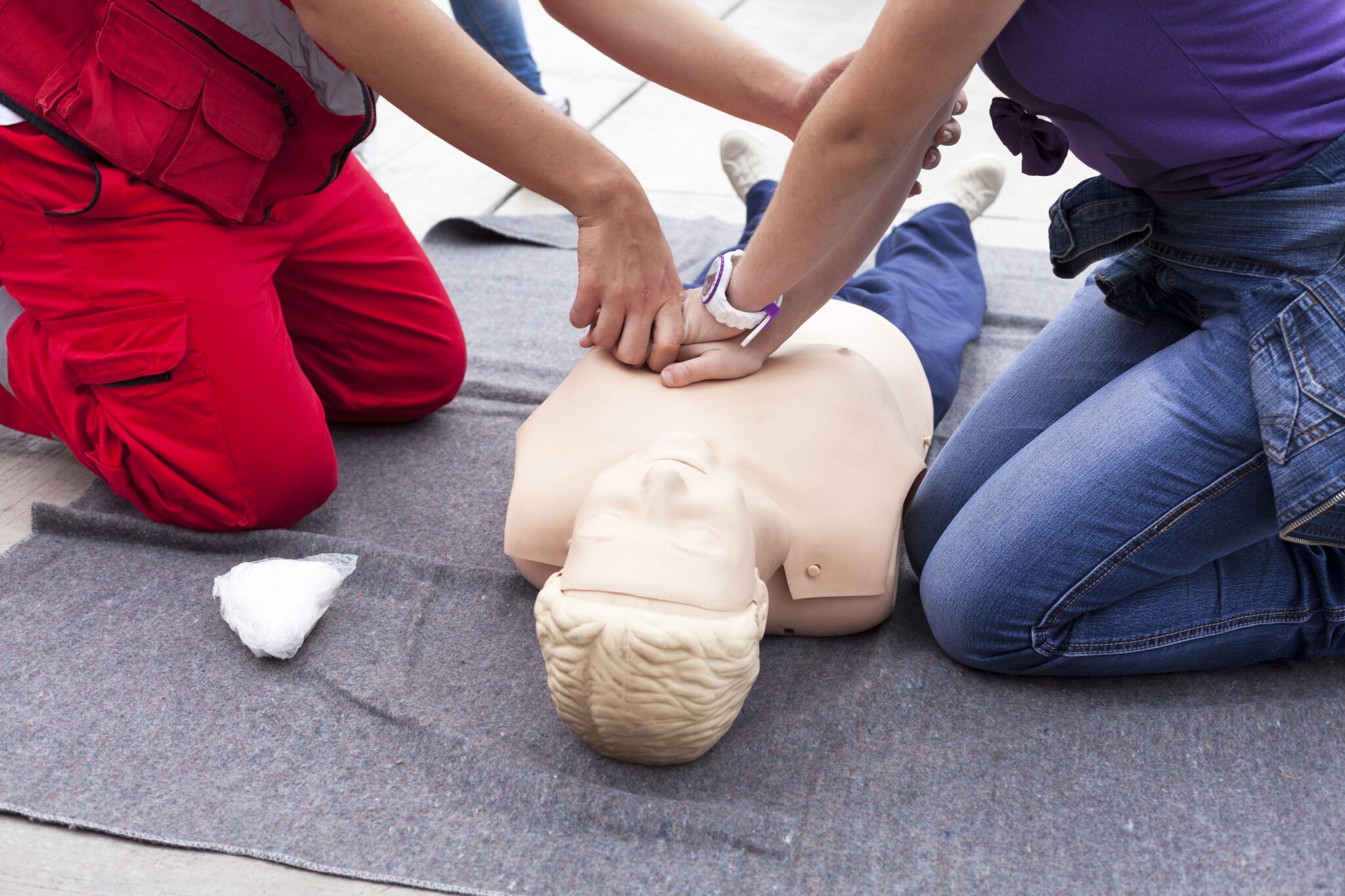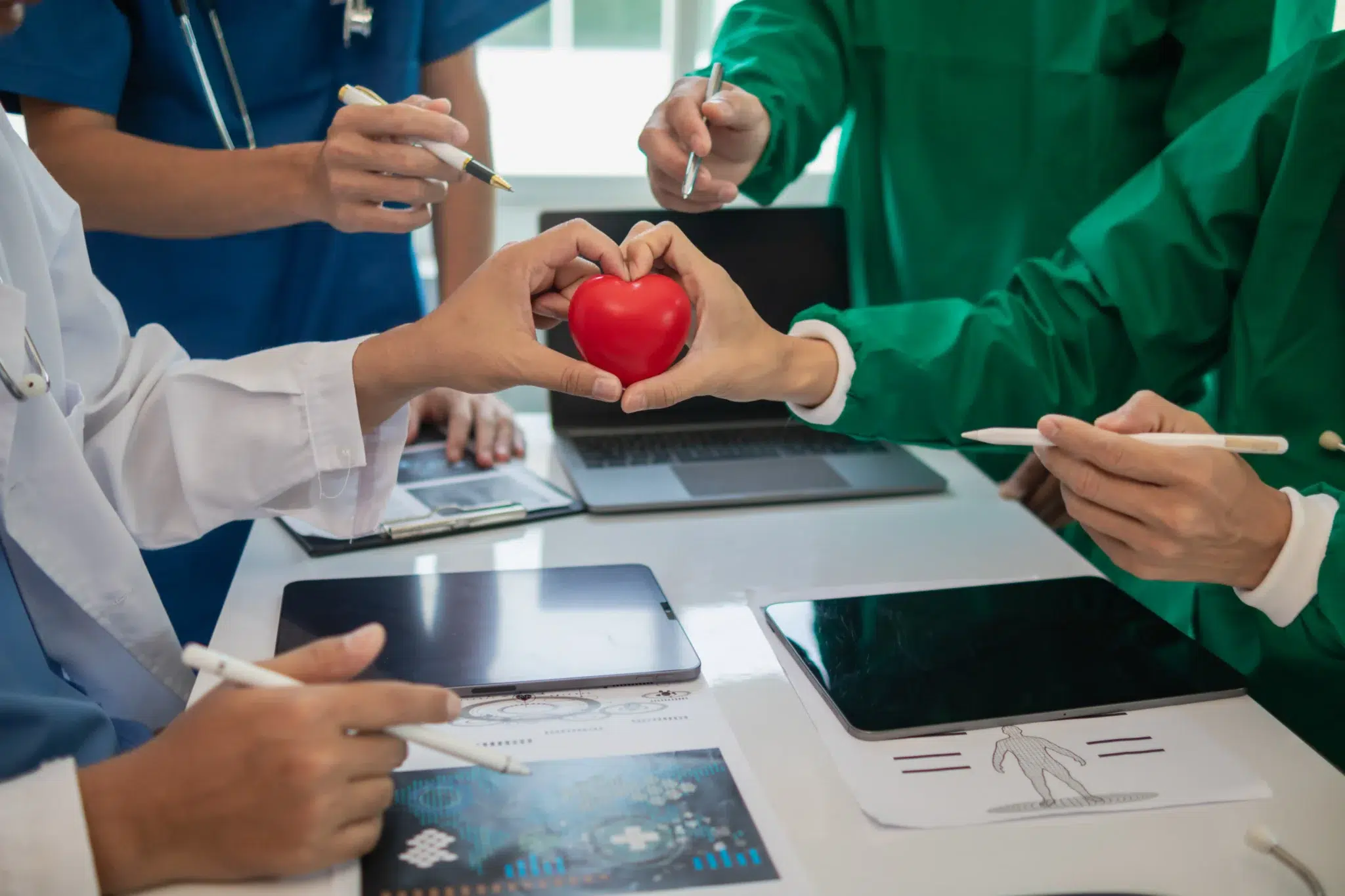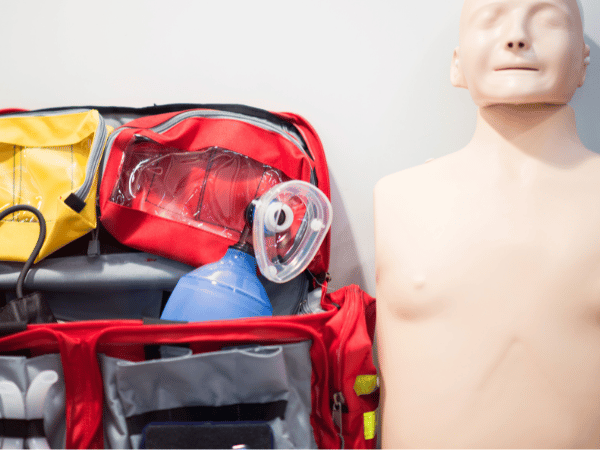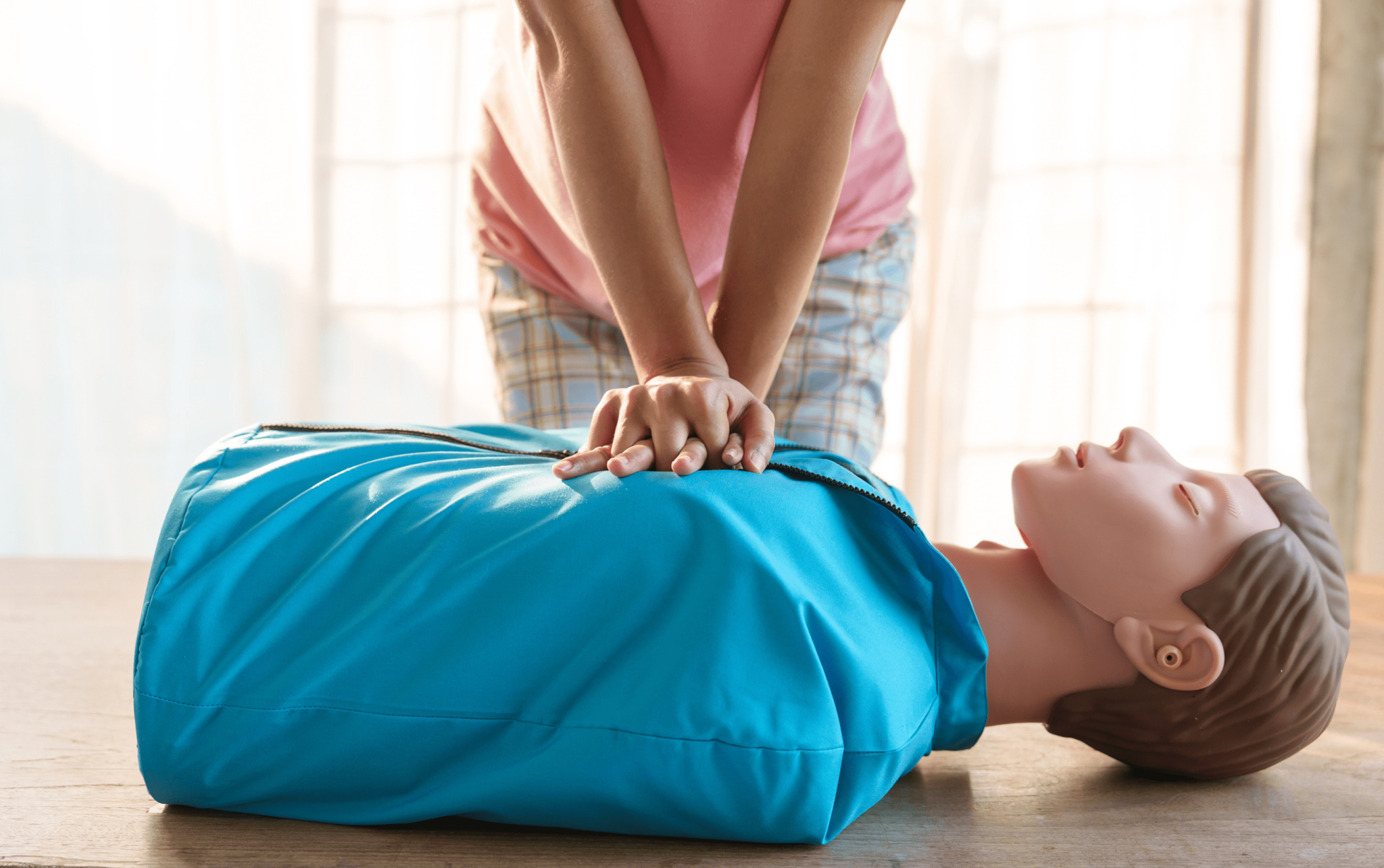Working in healthcare, you know how quickly situations can turn critical. Seconds matter when someone’s life is on the line. That’s why having rock-solid Basic Life Support (BLS) skills is non-negotiable for healthcare providers in SF. This isn’t just about checking a box on your training requirements; it’s about being ready to step up confidently when it matters most. This guide breaks down everything you need to know about BLS for healthcare providers in SF, from the core skills you’ll master to finding the right training program and staying up-to-date. We’ll cover the essentials of CPR, AED use, and airway management, plus the importance of teamwork and communication in emergency situations. Let’s get you prepared to provide the best possible care.
Key Takeaways
- BLS certification goes beyond basic CPR: It equips healthcare professionals with the skills to manage airways, use an AED, and work effectively in a team during emergencies. Regular renewal keeps your skills sharp.
- Find a BLS course that fits your learning style and schedule: Options range from traditional in-person classes to flexible online and blended learning formats. The RQI program offers a convenient way for healthcare providers to maintain their certification.
- Invest in a high-quality BLS training experience: Look for courses with experienced instructors, hands-on practice, and real-time feedback to build confidence and competence.
What is BLS for Healthcare Providers?
Basic Life Support (BLS) certification is a critical credential for healthcare professionals. It equips you with the skills to respond to life-threatening emergencies, focusing on high-quality CPR and other essential techniques. It’s important to understand what BLS training involves and why it’s vital in a healthcare setting.
Key BLS Training Components
BLS certification goes beyond basic CPR training. It covers a broader range of skills, including recognizing and responding to respiratory distress, choking, and cardiac arrest. You’ll learn how to perform high-quality CPR for adults, children, and infants, use an automated external defibrillator (AED), and provide effective ventilation using a bag-mask device. BLS also emphasizes teamwork and clear communication during emergencies. Our BLS certification course provides a comprehensive curriculum.
Why Healthcare Professionals Need BLS
In the fast-paced world of healthcare, emergencies can happen at any time. BLS equips healthcare providers—doctors, nurses, paramedics, and others—with the skills to respond swiftly and effectively. Having a team of BLS-certified professionals can significantly improve patient outcomes and survival rates, allowing for immediate care while waiting for advanced medical assistance. Learn more about the importance of BLS training.
BLS vs. Other CPR Certifications
CPR teaches essential life-saving skills like chest compressions and rescue breaths. BLS certification builds upon those foundational CPR skills, adding techniques for airway management, using an AED, and working effectively in a team. This broader skillset makes BLS the preferred certification for healthcare professionals, preparing them for diverse emergency situations. The American Heart Association offers detailed information on various CPR and BLS certifications.
Common BLS Certification Misconceptions
One common misconception is that BLS certification is a one-time requirement. Medical guidelines and best practices change, so regular BLS renewal is essential to maintain up-to-date skills and provide the best care. Another misconception is that BLS is exclusively for doctors and nurses. Many healthcare roles, from medical assistants to physical therapists, benefit from BLS training. It’s a valuable asset for anyone in healthcare.
Top BLS Certification Providers in San Francisco
Finding the right BLS certification course can feel overwhelming with so many options. To simplify your search, we’ve compiled a list of reputable providers in San Francisco. This list includes various training formats and price points, so you can find the best fit for your needs.
Safety Training Seminars
Safety Training Seminars offers American Heart Association (AHA) certified courses in CPR, BLS, ACLS, PALS, and First Aid throughout Northern California, including San Francisco and the Bay Area. With a low-price guarantee and classes running daily in over 60 cities, finding a convenient time to attend a BLS course shouldn’t be a problem.
American Red Cross
The American Red Cross is a trusted provider of BLS certification and renewals in San Francisco. They offer classes for both individuals and organizations. Their training incorporates real-life emergency scenarios to prepare participants to perform CPR, use an AED, and relieve obstructed airways for adults, children, and infants.
Revive CPR
Revive CPR specializes in AHA-certified CPR, BLS, and First Aid classes in San Francisco. Their instructor-led courses prioritize hands-on training to provide students with practical experience. They also offer same-day CPR certification and blended learning options that combine online and in-person sessions.
Bay Area CPR
Bay Area CPR offers a variety of BLS certification courses specifically designed for healthcare providers. Their programs use hands-on training and real-life scenarios to ensure participants are well-prepared for emergencies.
Other Local Providers
You can also find BLS certification through other local providers in San Francisco. Many offer online and blended learning formats, which provides flexibility for busy professionals. A quick online search will reveal additional training centers and courses.
Choose the Right BLS Training Format
Finding the right BLS training format depends on your learning style, schedule, and budget. Let’s break down the most common options available in San Francisco: in-person, online, blended learning, and the RQI program. Each has its own advantages, so consider what works best for you.
In-Person Training Benefits
In-person BLS training offers a hands-on learning experience, guided by an instructor. This format excels at providing real-time feedback and allows you to practice skills in a controlled environment. For many, the direct interaction with an instructor and classmates clarifies concepts and builds confidence. If you thrive in a traditional classroom setting and value face-to-face instruction, consider in-person BLS training. Safety Training Seminars offers in-person training across multiple locations in San Francisco, making it easy to find a class that fits your schedule. Check out our BLS course page for more details.
Online Course Flexibility
Online BLS courses offer unparalleled flexibility. You can learn at your own pace, fitting the training around your busy schedule. This format often involves interactive modules, videos, and quizzes to reinforce learning. Online certification is particularly helpful for those constantly on the go or who prefer self-directed learning. While online courses offer convenience, remember that BLS requires hands-on skills. Make sure any online course you choose includes a practical skills assessment component.
Blended Learning Advantages
Blended learning combines online learning and in-person skills practice. You’ll typically complete the cognitive portion of the course online, then attend a shorter in-person session to demonstrate your skills. This approach reduces overall classroom time while still ensuring competency. Blended learning courses are a good fit if you appreciate the flexibility of online learning but also want the reassurance of hands-on instruction.
RQI Program Features
The Resuscitation Quality Improvement (RQI) program offers a streamlined approach to BLS certification. RQI uses low-dose, high-frequency training to maintain your skills. You’ll complete online modules and practice skills on a manikin, often with the opportunity for same-day certification. This program is designed specifically for healthcare professionals and is an efficient way to stay up-to-date with the latest resuscitation guidelines. Safety Training Seminars offers RQI classes in San Francisco, providing a convenient way to maintain your BLS certification.
BLS Certification: Costs and Value
Getting BLS certified is an investment in your career and the safety of those around you. But how much does it cost, and what value does it bring? Let’s take a closer look.
Average San Francisco Pricing
BLS certification in San Francisco typically costs somewhere between $50 and $150. Several factors influence the price, including the training provider, the course format (in-person, online, or blended), and whether you need initial certification or recertification. For a complete overview of BLS classes in San Francisco, take a look at this helpful guide.
Available Discounts and Promotions
Many training centers offer discounts and promotions. For example, Safety Training Seminars offers a low-price guarantee and often provides group discounts and special rates for medical and dental students. It’s always wise to ask about potential savings when you register. You can also explore options like Pleasant Hill CPR Classes for other promotions in the area.
Return on Investment for Healthcare Professionals
For healthcare professionals, BLS certification is essential. Providers with BLS training are better prepared to handle emergencies, which can improve patient outcomes. This preparedness offers a significant return on investment, both professionally and ethically. The confidence to respond effectively in critical situations provides peace of mind and strengthens your credibility. Learn more about the value of BLS training.
BLS Course Experience and Quality
A quality BLS course goes beyond just ticking the boxes for certification. It empowers you with the confidence and competence to perform life-saving skills effectively. Here’s what sets apart a truly great BLS training experience:
Instructor Expertise and Engagement
Experienced, engaging instructors are crucial for a positive learning experience. Look for instructors who are not only certified but also actively involved in the healthcare field. Their real-world insights and ability to clearly explain complex concepts will make a significant difference in your understanding and retention of the material. Providers like Revive CPR specialize in AHA-certified courses and emphasize hands-on training. The American Red Cross uses real-life emergency scenarios to enhance practical application. An instructor who fosters a supportive learning environment and encourages questions can also significantly impact your comfort level and overall learning.
Hands-on Practice Opportunities
BLS is a skill-based course, so ample hands-on practice is essential. The more you practice chest compressions, rescue breaths, and AED use on training manikins, the more natural these actions will become in a real emergency. Look for courses that prioritize practice sessions and offer opportunities for personalized feedback from the instructor. Effective feedback during these sessions is key to improving your technique and building confidence. Studies show the value of hands-on training and feedback in nursing education.
Real-Time Feedback
Modern BLS training often incorporates real-time feedback devices. These tools provide immediate, objective data on your performance, allowing you to identify areas for improvement and refine your technique during practice. This immediate feedback is invaluable, allowing you to make adjustments and develop proper technique right away. Research supports the use of such devices to enhance feedback and improve CPR quality. Studies like this evaluation of objective feedback00716-7/fulltext) compare real-time feedback to instructor feedback alone and demonstrate the benefits of this technology in BLS training.
Objective Performance Metrics
Beyond real-time feedback during practice, objective performance metrics throughout the course can help you track your progress and identify strengths and weaknesses. These metrics might include compression depth and rate, ventilation volume, and overall performance scores. This data-driven approach allows you to focus your efforts on specific areas needing improvement and ensures you meet the required standards for certification. Objective feedback can be a strong motivator for improvement and contributes to better retention of BLS skills00716-7/fulltext), which is crucial for effective performance in real-life emergencies.
Master BLS Skills for Daily Practice
This section covers the core skills you’ll develop during your BLS training. These skills are essential for effective patient care and positive outcomes in emergencies.
CPR Techniques and Application
Basic Life Support (BLS) equips healthcare providers with the skills to handle life-threatening emergencies. At its core is CPR—cardiopulmonary resuscitation. High-quality CPR involves a precise combination of chest compressions and rescue breaths, ensuring adequate blood flow and oxygen delivery. BLS training emphasizes proper technique, including hand placement, compression depth and rate, and minimizing interruptions. This training prepares you to deliver effective CPR to adults, children, and infants, adapting your approach based on the patient’s age and size. You can find more details about BLS on the Illinois Safety website.
AED Use in Emergencies
Automated External Defibrillators (AEDs) can restore a normal heart rhythm in victims of sudden cardiac arrest. BLS certification courses, such as those offered by the American Red Cross, include comprehensive AED training. You’ll learn to assess the situation, apply the AED pads, and follow the device’s prompts. Knowing how and when to use an AED is a critical part of BLS training, empowering you to respond confidently in cardiac emergencies.
Airway Management Skills
Effective airway management ensures adequate oxygenation during a medical crisis. BLS training covers various techniques for opening and maintaining a patient’s airway, including the head-tilt-chin-lift and jaw-thrust. You’ll also learn to recognize and clear obstructed airways in adults, children, and infants. The Red Cross BLS program offers detailed instruction on these techniques, preparing you to manage airways effectively in various emergencies.
Team Dynamics and Communication
Responding to medical emergencies often requires teamwork and clear communication. BLS training emphasizes team dynamics, teaching you how to coordinate with other healthcare professionals during resuscitation. You’ll learn to assign roles, share information concisely, and provide constructive feedback. Research highlights how effective communication and teamwork impact patient outcomes in emergencies. BLS training prepares you to work collaboratively and communicate effectively under pressure.
Get and Maintain Your BLS Certification
Getting your BLS certification is a straightforward process. Here’s what you need to know to prepare, understand course expectations, and maintain your certification.
Preparation Tips
Before your BLS class, confirm what materials (if any) you need to bring. Some providers, like Safety Training Seminars, provide all the necessary training materials. Knowing the course fee ahead of time is also helpful. BLS certification in San Francisco typically costs between $50 and $150. The price depends on the training provider, the course format (in-person, online, or blended), and whether you’re getting initially certified or recertified. Check with your chosen provider, like Safety Training Seminars, for their latest pricing. A little pre-course review of basic life support skills can also boost your confidence.
Course Expectations
BLS courses for healthcare providers cover essential life-saving skills. Expect hands-on training in CPR, AED use, and airway management for adults, children, and infants. Many courses, including those from the American Red Cross, use real-life emergency scenarios to help you apply these skills effectively. This practical approach builds your ability to respond confidently in critical situations.
Certification and Renewal Process
After successfully completing your BLS course, you’ll receive your certification. Remember that BLS certification requires regular recertification to stay current with the latest medical guidelines. Keep track of your certification expiration date and plan for renewal accordingly.
Continuing Education Opportunities
Maintaining your BLS skills is an ongoing process. Look for continuing education opportunities to refine your techniques and stay sharp. Regular practice and refreshers ensure you’re always prepared to provide high-quality care. This commitment to ongoing learning is a valuable asset in your healthcare career.
Healthcare professionals looking to stay current on their certifications can find convenient training options nearby. Locations like BLS CPR Classes in Campbell and BLS CPR Classes in San Leandro offer AHA-compliant courses that combine hands-on practice with expert instruction to meet the needs of busy medical workers.
Related Articles
- BLS Courses in San Francisco: The Complete Guide – San Francisco CPR Classes
- BLS Certification in San Francisco: Your Guide – San Francisco CPR Classes
- BLS Classes in San Francisco: Your Complete Guide – San Francisco CPR Classes
- Why CPR is Critical in Healthcare Today
- PALS Certification in San Francisco: Your Complete Guide – San Francisco CPR Classes
Frequently Asked Questions
How often do I need to renew my BLS certification? BLS certification is typically valid for two years. Staying current with the latest guidelines is essential, so renewing on time is crucial for healthcare professionals.
What’s the difference between BLS and CPR certification? CPR training provides the foundational skills of chest compressions and rescue breaths. BLS builds upon this foundation, adding skills like AED use, airway management, and team dynamics, making it more comprehensive for healthcare providers.
Are online BLS courses accepted for healthcare jobs? Yes, many employers accept online BLS certifications, especially those that include a hands-on skills assessment component. Confirm with your employer or licensing board to ensure the online course meets their specific requirements.
What if I don’t work in a hospital setting? Do I still need BLS certification? While BLS is crucial for hospital staff, many other healthcare roles benefit from this training. Anyone working in healthcare, from medical assistants to physical therapists, can use BLS skills to respond effectively in emergencies.
How can I find BLS courses near me? A quick online search for “BLS certification near me” will show local providers and training centers. You can also check with professional organizations or your workplace for recommendations.


